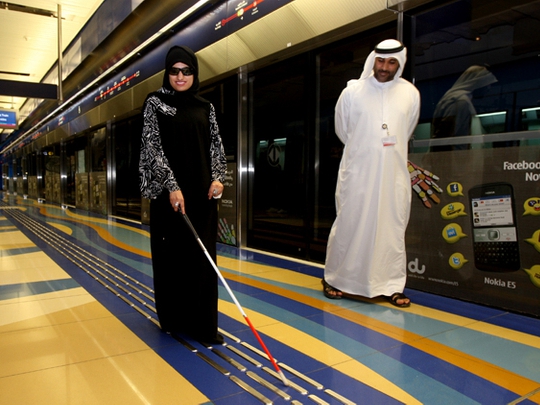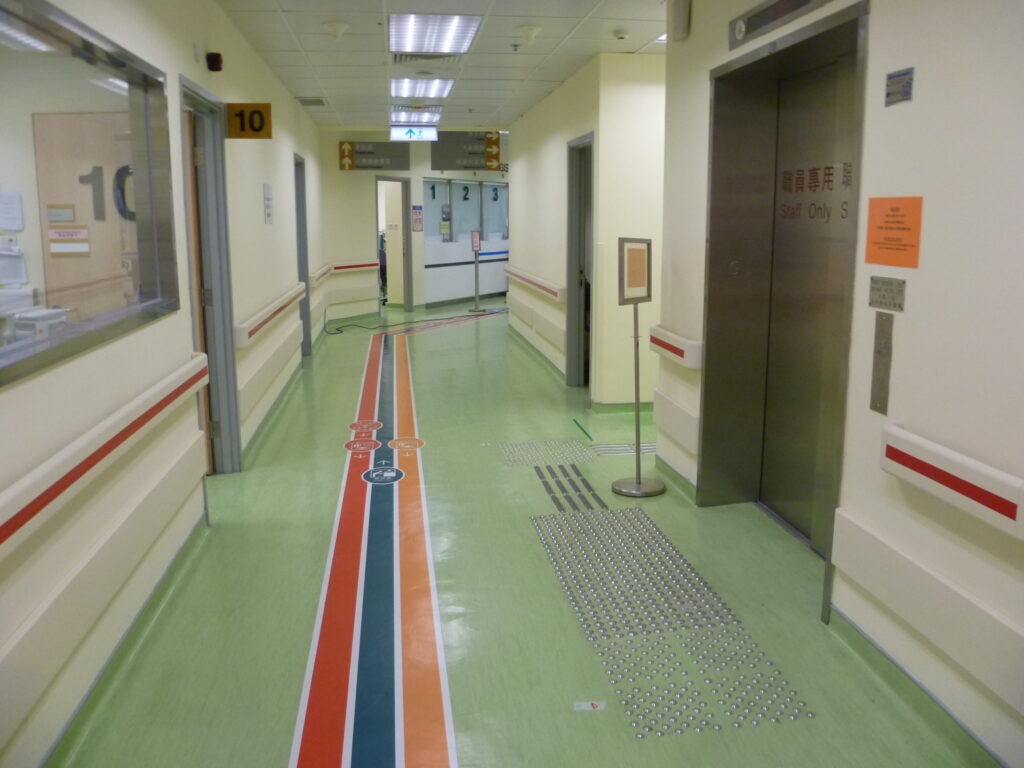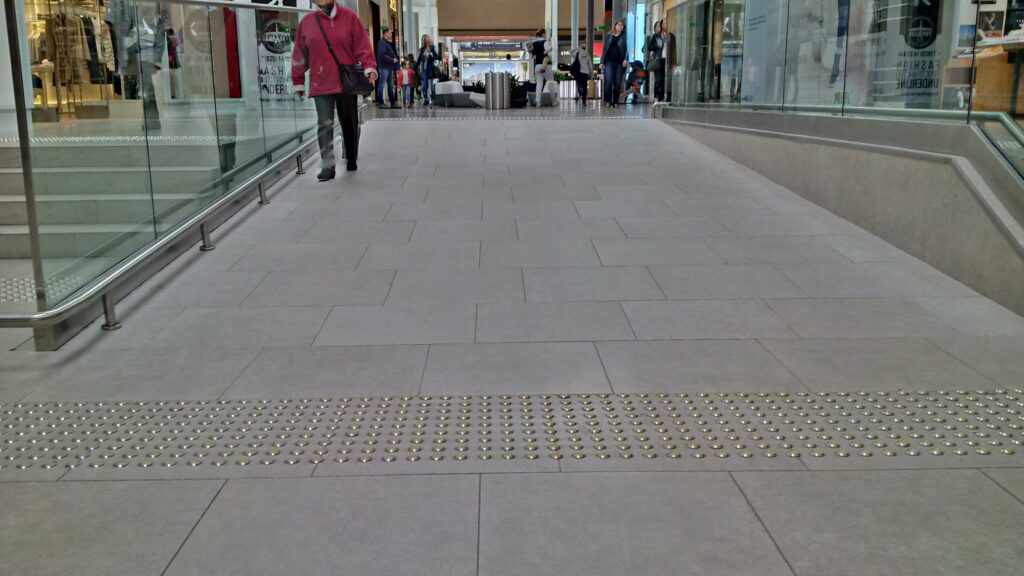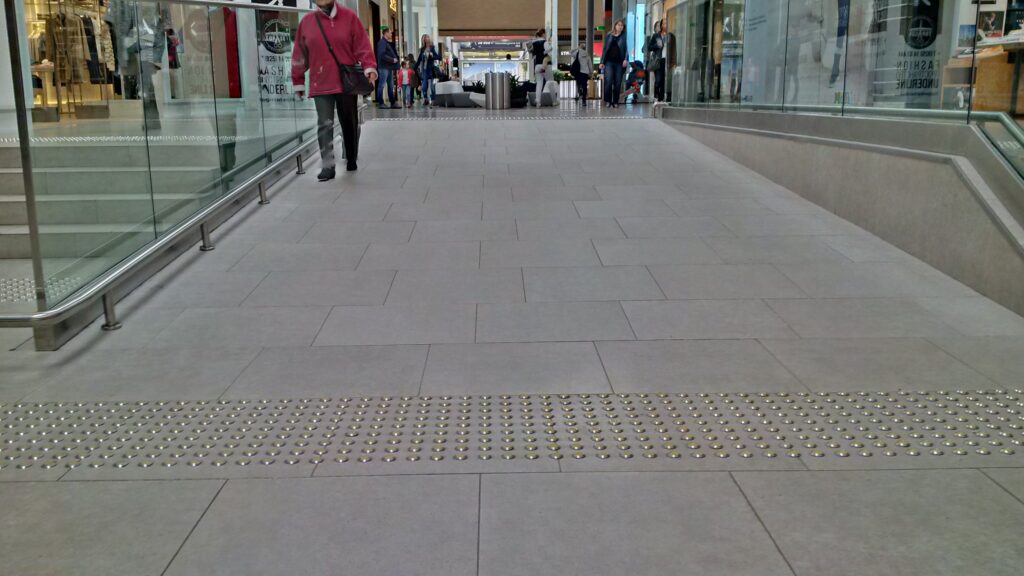Tactile indicators(also called tactile ground surface indicators) are not only useful for guiding and assisting the visually impaired, but can also be used in certain situations to allow inattentive Passers-by to perceive hazards in their current location by using the tactile surface of the product,and to improve their concentration. But where is the best place to install them?
The 6 best places to install tactile indicators
Train and underground stations
Public transport stations are regularly crowded with people and in such situations it is very unfavourable for the visually impaired to get around, so precautions must be taken to ensure safe travel for the visually impaired. This need should be met by installing tactile indicators on the ground where they get on and off transport.

Hospitals and schools
As these are the two areas with the most patients and children, safety should be improved by installing non-slip tactile indicators at entrances and stairways to improve slip resistance and reduce the chances of tripping.

Pedestrian crossings
In my opinion, pedestrian crossings can be dangerous places for people with visual impairments, as they can easily become disorientated by the noise of the road, making it difficult for them to move forward. Tactile blind crossings are the easiest way to guide them and allow the visually impaired to tactilely perceive possible hazards in their surroundings, thus enabling them to travel safely.
Supermarkets
Most supermarkets install tactile studs and tactile strips in front of the elevator as a way of reminding customers that they should be safe when entering and leaving the lift and that they should keep a certain distance from the lift when it is running.

Public Offices
Every business should do a good job of safeguarding the safety of its employees. In companies, countless employees and customers come in and out every day, so at this time paving with tactile attention indicator will not only prevent people from slipping but will also make the premises more aesthetically pleasing. If it is indoors, from the aesthetic aspect, I would strongly recommend that you choose stainless steel tactile ground surface indicators and copper tactile ground surface indicators, because the colour of the material of these two products is stronger visual impact, let people bright, and stainless steel and copper material wear resistance and non-slip is also very good.
Parks
Usually the parks road surfaces are undulating and there will commonly be rocks, gullies, vegetation, railings and other obstacles to normal pedestrian walking, so this is certainly a major difficulty for the visually impaired when visiting the park. Therefore, I think it is important to install tactile hazard warning surfaces in parks with special road conditions to provide more assistance to the visually impaired and make the parks truly accessible.
Laying requirements for tactile indicators
Once the site for the installation has been determined, the standard requirements for the installation of tactile walking surface indicators should be developed based on the actual site, as a means of achieving a uniform and standardised installation. The following is a set of installation standards that I have compiled for your reference:
- Tactile indicators shall be installed in a position and direction that allows visually impaired persons to walk safely and reach accessible locations without difficulty.
- Tactile indicators should be continuous, avoiding obstacles such as trees, poles, cables, tree holes and manhole covers. Other facilities should not occupy the tactile indicators.
- If TGSI is installed on a pavement, it should be installed at a distance of 250-600mm from a roadside tree hole on the inside of the pavement or, if there is no tree hole, at a distance of not less than 500mm from a standing stone.
- To ensure that each tactile stud is installed at the same spacing, measurements should be taken prior to installation to ensure that the nails are installed at 50mm +/- 1mm centres.
Hope that the above specification standards will help you in your subsequent tactile indicator installation projects.
If you have identified a tactile blind project and have set strict standards for installation specifications. To find out more about the tactile indicators we manufacture and to be sure of finding the best tactile blind for your project, please see our product range here.

